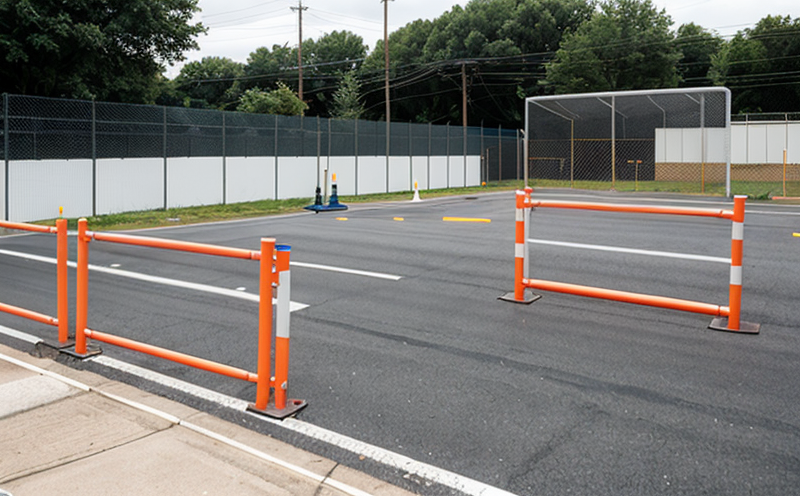BS EN 14458 Firefighter Protective Face Shields Testing
The BS EN 14458 standard provides a comprehensive framework to ensure that protective face shields used by firefighters meet the required performance standards for protection against heat, flame, and other hazardous conditions. This standard is crucial in safeguarding the lives of emergency responders who are exposed to extreme fire-related hazards during their operations.
The testing procedure outlined in this standard aims at evaluating the resistance of firefighter protective face shields to thermal stress, ensuring that they can withstand exposure to high temperatures without compromising the safety of the wearer. The primary objective is to verify that these face shields remain intact and provide adequate protection under specified test conditions.
During the testing process, face shields are subjected to controlled environments where their ability to resist heat transfer and maintain structural integrity is assessed. This involves subjecting the specimen to temperatures exceeding 500°C (932°F) for a duration of up to five minutes. The tests simulate real-world scenarios that firefighters might encounter when dealing with intense fires.
Key parameters measured during this testing include:
- Thermal resistance
- Structural integrity retention
- Residual damage assessment
- Flame spread characteristics
The results of these tests are critical in determining whether the face shields meet the stringent requirements set forth by BS EN 14458. Compliance with this standard not only ensures that firefighters have reliable protective equipment but also contributes to overall public safety.
For accurate and consistent testing, specialized test facilities equipped with precise temperature control systems are essential. These facilities provide a controlled environment where the exacting requirements of the standard can be met. The precision and repeatability of such tests are paramount in ensuring that every batch of protective face shields produced adheres to the highest safety standards.
The importance of this testing cannot be overstated, as it directly impacts the effectiveness and reliability of firefighter protective equipment. By conducting rigorous tests according to BS EN 14458, manufacturers can ensure that their products not only meet regulatory requirements but also provide the necessary level of protection required in emergencies.
Scope and Methodology
The scope of testing as per BS EN 14458 encompasses various aspects related to the performance, safety, and reliability of firefighter protective face shields. The methodology outlined in this standard ensures that all critical parameters are rigorously assessed to guarantee the highest level of protection.
Key elements tested include:
- Thermal resistance
- Structural integrity retention
- Flame spread characteristics
- Residual damage assessment
The testing process involves exposing the face shields to controlled high-temperature environments that simulate real-world fire scenarios. This allows for a comprehensive evaluation of how well the shields perform under extreme conditions.
For accurate results, specialized test equipment is used. These include furnaces capable of reaching temperatures above 500°C (932°F), along with precise temperature control systems to ensure consistency and reliability in testing outcomes. The use of such advanced instrumentation ensures that every test conducted adheres strictly to the prescribed standards.
The methodology also includes detailed procedures for specimen preparation, ensuring that each shield is tested under identical conditions. This approach enhances the comparability of results across different batches or models of shields. Compliance with these rigorous testing protocols guarantees that all protective equipment meets the necessary safety and performance criteria.
Why Choose This Test
Selecting BS EN 14458 firefighter face shield testing is essential for several reasons:
- Regulatory Compliance: Ensures that the protective equipment meets international standards and regulations.
- Safety Assurance: Provides peace of mind knowing that the equipment has been rigorously tested to withstand extreme conditions.
- Quality Control: Helps maintain consistent product quality across batches or models.
- Risk Mitigation: Reduces potential risks associated with substandard protective gear by ensuring adherence to strict testing protocols.
The comprehensive nature of BS EN 14458 testing offers several advantages, making it an indispensable component in the manufacturing and procurement processes for firefighter equipment. By choosing this test, stakeholders can ensure that they are providing reliable, high-quality protective gear capable of withstanding harsh environmental conditions.
Use Cases and Application Examples
The application of BS EN 14458 testing extends beyond mere compliance; it has practical implications in various scenarios:
- Firefighting Operations: Ensures that firefighters have reliable equipment to protect them from intense heat and flames.
- Emergency Response: Provides critical protection during rescue operations where exposure to fire is inevitable.
- Training Simulations: Allows for realistic training scenarios to prepare personnel for real-world emergencies.
- New Product Development: Helps manufacturers innovate and improve the design and materials of protective face shields.
The results of these tests are crucial in ensuring that firefighters can perform their duties safely, thereby enhancing overall public safety. By adhering to strict testing protocols like BS EN 14458, manufacturers and suppliers can contribute significantly to reducing risks associated with firefighting operations.





